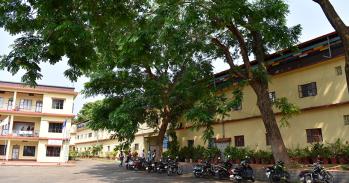
The seat of the Khmer Empire in Cambodia mysteriously collapsed in the 15th century. Now a University of Cambridge Gates Scholar has pieced together its climate history and put forward a compelling new theory to explain its demise.
The seat of the Khmer Empire in Cambodia mysteriously collapsed in the 15th century. Now a University of Cambridge Gates Scholar has pieced together its climate history and put forward a compelling new theory to explain its demise.
There is a lot we can learn from studying how climate change affected populations in the past which could help us to devise ways of coping in the future.
Mary Beth Day
What caused the collapse of the Cambodian city of Angkor, the largest preindustrial city in the world, 600 years ago? Previous research suggests war and overexploitation of the land were to blame, but a new study says drought may have played a major role despite the city's sophisticated water management system.
The research into the demise of the city, site of the world famous Angkor Wat temple, could have lessons for people dealing with climate change today, says Gates Cambridge scholar Mary Beth Day.
She is a member of an international research team which has been studying the water management system of Angkor, the seat of the Khmer empire. Angkor, which dates back to the ninth century, is a UN World Heritage site and considered one of the most important in archaeological sites in South-East Asia. Angkor Wat is said to be the world's largest single religious monument. The region's art and architecture have had a profound influence throughout South-East Asia.
Previous reasons suggested for the collapse of Angkor in the 15th century include war and overexploitation of the land. Mary Beth, a paleolimnologist who is doing a PhD in Earth Sciences at the University of Cambridge, collected sediment samples from across the region by travelling around in a motorised rickshaw or tuk tuk. From these samples, as well as a sediment core from a reservoir built by the Khmer in the 11th century, she and her colleagues were able to piece together a 1,000-year climate history for the region.
They found that at the time Angkor collapsed, sediment deposition rates dropped significantly, water levels fell dramatically. This led to changes in the ecology of the reservoir and, says Mary Beth, is likely to be a cause of the region's collapse, although not the only one.
She says that the political and social unrest between the lower and ruling classes created a perfect storm which meant that the city was not equipped to tackle the environmental challenges of the drought. “It was too much for them to handle all at once,” she says, adding that deforestation may have contributed to the area's environmental problems.
The research was recently published in the Proceedings of the National Academy of Science and has drawn headlines worldwide, from The New York Times to the BBC World Service. She will be interviewed for BBC Radio Four's Material World on Thursday.
Mary Beth believes the research has implications for modern day attempts to curb the effects of climate change. “Angkor had a very sophisticated water management system, but still it was not enough to combat extreme climate issues and political and social unrest,” she says. “There is a lot we can learn from studying how climate change affected populations in the past which could help us to devise ways of coping in the future.”
This work is licensed under a Creative Commons Licence. If you use this content on your site please link back to this page.





